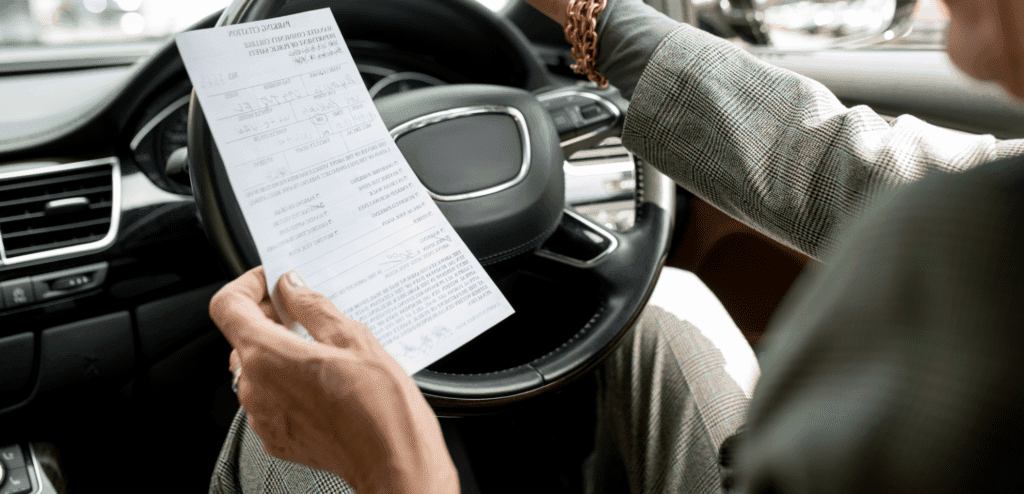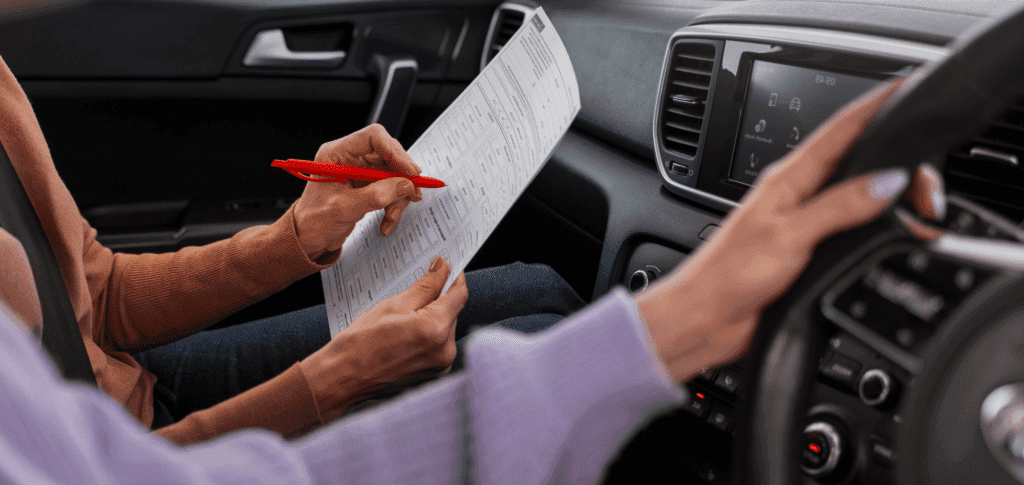
Understanding your driving test results is crucial to becoming a better driver. It’s not just about passing or failing; it’s about recognising where your driving skills can improve.
This article delves into how you can interpret and learn from your results, turning feedback into actionable insights for future success.
Introduction
The journey to becoming a proficient driver is filled with learning opportunities, with the driving test being a significant milestone.
However, the value of this process lies not just in obtaining your licence but in understanding the feedback and faults identified during your test.
This knowledge is a powerful tool for personal development and safer driving practices.
Comprehending Faults and Feedback
Types of Faults Identified
Driving tests meticulously assess a wide range of skills, categorising errors as either minor, major, or serious faults. Understanding the nature of these faults helps pinpoint specific areas for improvement.
Analyzing Feedback for Improvement
Each fault recorded during your test offers a clear indication of what to focus on. By reviewing these areas with your driving instructor, you can devise a targeted plan to address each issue.

Detailed Fault Categories and Common Mistakes

Ancillary Controls
Mistakes in this area often include failing to use windscreen wipers during rain or incorrectly using the demisters, impacting visibility and control.
Awareness and Planning
A common fault is not anticipating the actions of cyclists and other road users, leading to potential hazards.
Clearance to Obstructions
Many learners fail to maintain a safe distance when passing parked vehicles or move back in too soon, which can be dangerous.
Control
Errors in control could involve over-steering, coasting, or selecting the wrong gear, affecting the car’s handling.
Controlled Stop (Emergency Stop)
A delayed reaction or locking the wheels during an emergency stop are significant faults that can have serious safety implications.
Following at a Safe Distance
Tailgating or not adjusting distance in poor weather conditions are critical mistakes that compromise road safety.
Forward Drive (Parking)
Failing to park within the lines or steering too close to another vehicle are common errors in parking maneuvers.
Judgement (Overtaking, Meeting, Crossing)
Poor judgement when overtaking, or incorrect decisions at junctions, shows a lack of understanding of road rules and safety.
Junctions (Including Roundabouts)
Misjudging the speed of oncoming vehicles or incorrect positioning on the road are frequent junction-related faults.
Move Off
Not checking blind spots or stalling the car can lead to serious faults during the test.
Pedestrian Crossing
Stopping on the crossing instead of before it, or failing to give way to pedestrians, are serious errors.
Position and Normal Stops
Blocking driveways or parking with wheels on the pavement shows a lack of consideration for other road users.
Positioning
Driving too close to the pavement or straddling lanes can endanger pedestrians and disrupt the flow of traffic.
Precautions
Starting the car in gear or adjusting mirrors while moving are faults that indicate a lack of basic precautions.
Progress
Driving too slowly or hesitating unnecessarily can cause congestion and frustrate other drivers.
Response to Signs and Signals
Ignoring traffic signs, speed limits, or bus lane restrictions indicates a failure to observe and respond appropriately to road signs and signals.
Reverse Park
Lack of control or failing to observe surroundings while reverse parking are common areas of fault.
Reverse / Right (Pull up on the Right)
Failing to judge oncoming traffic or parking too far from the curb shows a lack of spatial awareness.
Signals
Incorrect or late signalling can confuse other road users and lead to dangerous situations.
Use of Mirrors
Failing to effectively use mirrors when changing lanes or pulling up can result in faults.
Use of Speed
Exceeding speed limits or not adjusting speed to match road conditions are serious errors.
Vehicle Checks (‘Show Me, Tell Me’ Questions)
Not knowing how to perform basic vehicle checks or control the car while doing so can lead to faults even before you start driving.
Learn more about ‘Show me, tell me’ questions
Strategic Preparation for Retesting
Collaborating with Your Driving Instructor
Share your test feedback with your instructor, focusing on the faults identified. This collaboration is vital for tailoring your lessons towards overcoming specific weaknesses.

Mock Tests and Focused Practice
Conducting mock tests under exam conditions can significantly help you familiarise yourself with the test format and pressure.
These simulations should particularly target your identified weaknesses, enabling you to practice specific scenarios until you’re comfortable and confident.
Your driving instructor can offer invaluable feedback during these sessions, mirroring the formal test environment and examiner’s role.
When to Rebook Your Test
Deciding when to rebook your test is crucial. Only proceed once you and your instructor agree that you’ve made substantial improvements in the areas previously flagged as faults.
It’s not merely about spending a certain amount of time practising; it’s about reaching a level of proficiency where those mistakes are no longer a part of your driving.
Patience and perseverance are key — rushing back into a test without adequate preparation might lead to disappointment.
Additional Resources and Tips for Success
Further Guidance and Support
Beyond practical driving lessons, numerous resources can aid your learning. Online tutorials, driving theory apps, and educational materials offered by driving schools can provide deeper insights into safe driving practices and help clarify any misunderstandings.
Engage with these resources regularly to reinforce your learning and stay updated on driving regulations.

Harnessing the Power of Feedback
Embrace every piece of feedback, not just from your driving test but also from lessons and mock exams.
Constructive criticism is a goldmine for improvement; it directs your attention to areas you might not have realised needed work. Reflect on this feedback often, and incorporate it into your practice sessions.
Staying Motivated and Positive
Maintaining a positive attitude towards learning and improvement is crucial. It’s easy to feel discouraged after a setback, but resilience is key.
Every driver has unique challenges and learning curves. Celebrate your progress, no matter how small, and remember that persistence will lead you to success.
Seeking Additional Practice
If possible, supplement your professional lessons with private practice, adhering to legal requirements for learner drivers.
This additional practice can be invaluable, providing real-world experience in a variety of driving conditions.
However, ensure this is always done safely, with a focus on reinforcing correct driving habits, not ingraining poor ones.
Adjusting Your Learning Approach
If certain faults persist, consider changing your learning strategy. This might involve focusing more on practical experience in specific areas, like busy junctions or parking, or it might mean taking a step back to revisit the basics if foundational skills need strengthening. Flexibility in your approach can lead to breakthroughs in your driving ability.
By understanding your driving test results and taking a structured approach to address identified faults, you’re not just preparing to pass a test; you’re building the foundation for a lifetime of safe driving.
The journey to becoming a skilled driver is unique for everyone, filled with its own challenges and triumphs. Remember, the ultimate goal is not merely to pass the driving test but to become a competent, confident, and safe driver on the roads.



